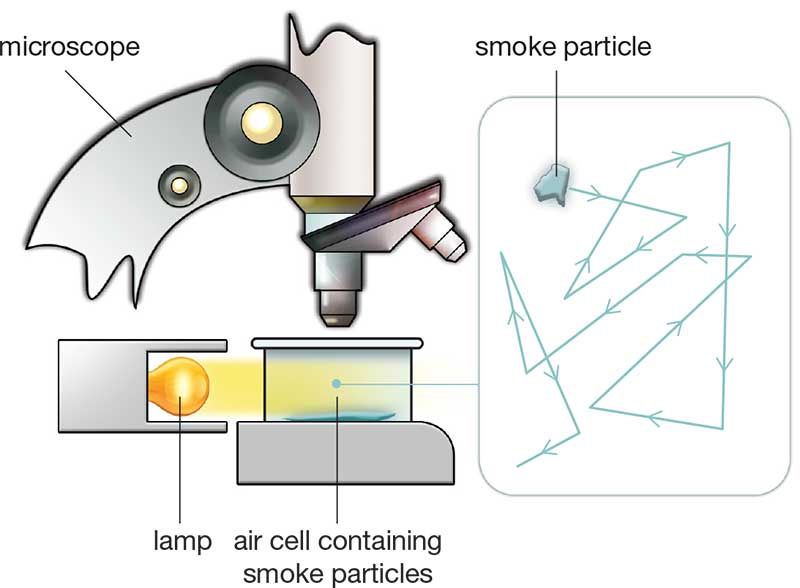Unit 2 Thermal physics
Notes
Molecular model
Brownian motion
- The Brownian motion experiment uses a microscope to view very small smoke particles in a
transparent air cell. It shows the smoke particles moving randomly. This is evidence of free
moving air molecules.

- According to the kinetic theory, a gas such as air is made up of an extremely large number of tiny, invisible molecules that have relatively large spaces between them and are constantly moving randomly.
- These molecules have no effect on each other except when they collide. All collisions are elastic; this means the molecules bounce off each other without losing kinetic energy.
- The smoke particles in the air cell are constantly bombarded from all sides by the air molecules. The larger smoke particles can be seen to move in random straight lines in a zig-zag pattern (see diagram above).
- This random movement is due to collisions between the very light but fast-moving air molecules (which are too small to be seen) and the smoke particles (which are larger and can be seen).









